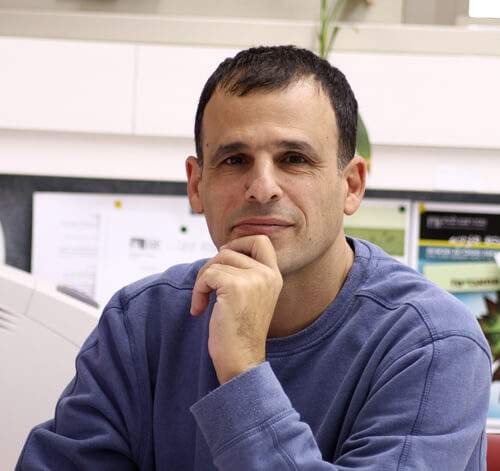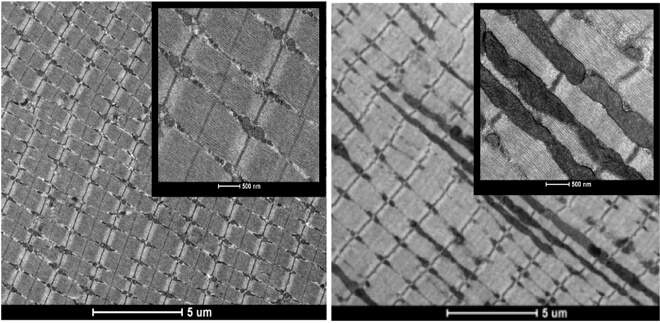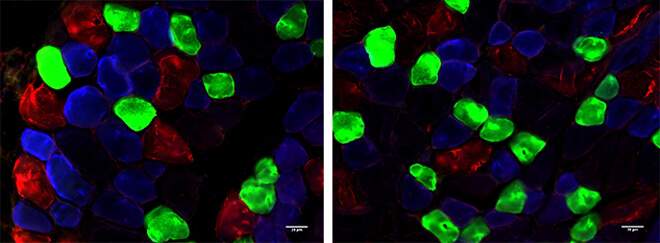Are you a journalist? Please sign up here for our press releases
Subscribe to our monthly newsletter:
Many people would love to eat to their heart’s content and stay slim. That’s just what happened to genetically engineered mice in a new Weizmann Institute study: They stayed impressively lean despite eating more than usual and consuming a great deal of high-fat food. Not only that, the mice were more athletic than the controls and their heart function was found to have increased.
“The secret to these mice staying lean despite a high-fat diet is most likely their increased muscle metabolism, which leads to elevated whole-body energy demand and heat production,” says study leader Prof. Atan Gross of the Biological Regulation Department. The metabolic parameters of the mice in the study were similar to those usually observed during strenuous exercise, even when the mice didn’t move: They had improved glucose metabolism and high levels of lactic acid in their muscle cells, as well as an increased number of high-oxygen consumption fibers that are used during long-term endurance training. And when these mice did exercise, they performed better than the controls in an endurance test on the treadmill, and their heart’s stroke volume and other heart function parameters were increased.

In the study, published in Cell Reports, Dr. Liat Buzaglo-Azriel, then a research student, and other members of Gross’s team had genetically manipulated the mice so that their muscle cells lacked a protein called MTCH2, dubbed “Mitch,” discovered by Gross more than a decade ago. In earlier research, Gross’s team had discovered that in certain body systems, Mitch, which is normally present in the membranes of the cells’ power plants – called the mitochondria – suppresses the activity of these organelles. In this new study, the scientists found that in the absence of this suppressor – when Mitch was missing and the mice failed to gain weight despite eating a great deal of high-fat food – the size of the mitochondria in their muscle cells increased at least fivefold and the activity of these mitochondria grew significantly, indicating an increase in metabolism.
This increase sounds like a welcome enhancement of athletic capacity, but in fact it may be the cell’s way of coping with stress. It is known that under conditions of severe stress, Mitch serves as a target for cellular suicide messages. When these messages arrive, Mitch takes part in prompting the mitochondria to develop holes and disintegrate, which ultimately causes the cell to die. But now that Mitch-lacking mice have been found to have increased metabolism, it appears that these messages may not be suicide commands after all; rather, they are probably a call for action, not necessarily suicidal. Says Gross: “It seems that the cell is not in a rush to die. Its initial response to stress is first of all to enhance its metabolism in order to deal with the threat, and to live. It might decide to die only later – for example, if the stress persists.”

In light of these findings, our profile of the mitochondria may need to be revised: Beyond ensuring energy production, these cellular organelles appear to play a crucial role in determining cell fate. As well as clarifying the basic mechanisms of cellular metabolism, the study may in the future help develop new ways of controlling obesity and diabetes. People with certain mutations in the Mitch gene have been found to be overweight, and this gene is known to be commonly related to obesity, diabetes and other metabolic disorders. The Weizmann study suggests that temporarily shutting Mitch down may point the way to alleviating these disorders. “This doesn’t mean people will be able to take a pill instead of exercising, but it may be possible to devise a way of controlling the activity of the Mitch protein to restore normal body metabolism,” says Gross.
Taking part in the study were Dr. Yehudit Zaltsman, Dr. Liat Shachnai, Elad Bassat, Dr. Inbal Michailovici, Dr. Alona Sarver and Prof. Eldad Tzahor – all of the Biological Regulation Department, Drs. Yael Kuperman and Michael Tsoory of the Veterinary Services Department; and Dr. Smadar Levin Zaidman of Chemical Research Support – all from the Weizmann Institute; as well as Dr. Michal Haran of Kaplan Medical Center and Dr. Cecile Vernochet of Pfizer, Inc., in Cambridge, Massachusetts.

Prof, Atan Gross's research is supported by the Yeda-Sela Center for Basic Research; the Louis and Fannie Tolz Collaborative Research Project; the Pearl Welinsky Merlo Foundation Scientific Progress Research Fund; the Hymen T. Milgrom Trust donation fund; the Rising Tide Foundation; Lord David Alliance, CBE; and the estate of Tony Bieber. Prof. Gross is the incumbent of the Marketa & Frederick Alexander Professorial Chair.